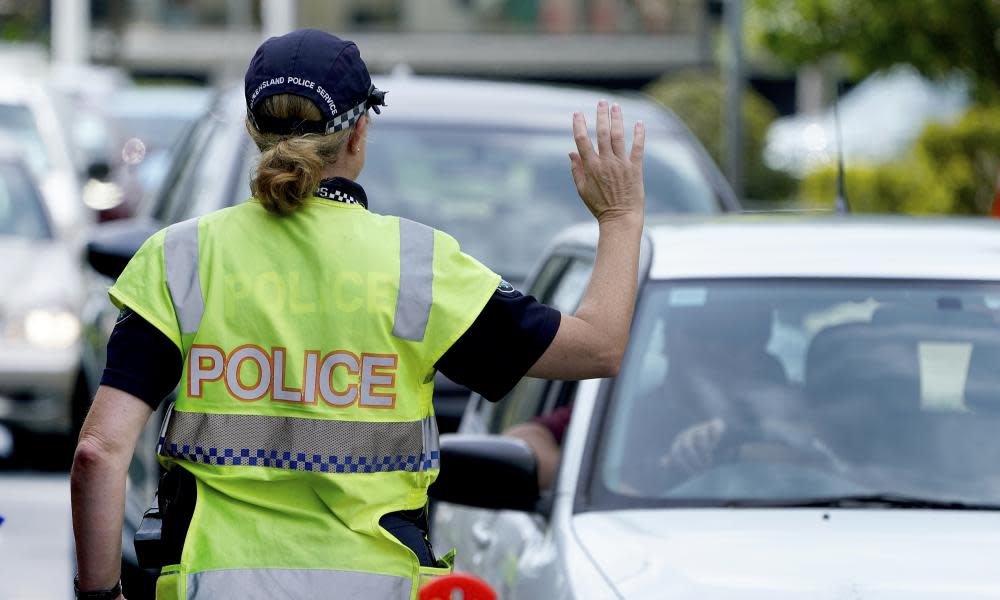Queensland orders anyone returning from 'Covid-19 hot spots' in NSW to quarantine for 14 days

Queensland’s chief medical officer has posted a list of “Covid-19 hot spots” in New South Wales and ordered anyone returning to the state from those locations to quarantine for 14 days.
It has been one week since Queensland closed its border to NSW for the first time since the Spanish flu outbreak of 1919. Police have been enforcing the “hard closure” at three checkpoints between the towns of Coolangatta and Tweed Heads on either side of the border.
The gates have also been shut on the state’s two other shared borders between the Northern Territory and South Australia.
Related: Chef Pete Evans criticised for trying to sell $15,000 light device to fight coronavirus
Queensland residents are exempt from the ban, but from Saturday those returning home from a list of designated interstate “Covid-19 hot spots” will be forced to undergo two weeks quarantine.
Announcing the new policy on Friday, the Queensland health minister, Steven Miles, said the “hot spots” had been chosen by the state’s chief medical officer, Jeannette Young.
“Of course if you are thinking of travelling, I would urge you to check these areas but more importantly I would urge you not to travel in the first place,” he said.
“This is not the weekend for going away. The highway near here, the day before Good Friday would normally be chockers, but [yesterday] there was nothing, similarly this morning the highway is very quiet.”
The list of areas is entirely made up of local government areas in NSW, where the majority of Australia’s Covid-19 cases have been concentrated. They include much of Sydney, including the city’s well-heeled eastern suburbs postcodes in Waverley where more cases of the virus have been recorded than anywhere else.
Scott Morrison’s home patch in the Sutherland shire is also included, as is Woollahra, the Northern Beaches, Randwick, the Inner West, Blacktown, Ryde, Ku-ring-gai, Canterbury-Bankstown and Cumberland.
The Central Coast, where the highest number of cases outside of Sydney have been recorded and where health authorities have uncovered a cluster of 12 cases at the Gosford hospital, is also included.
Australians returning from overseas have been required to quarantine for 14 days since 15 March, with mandatory stays inside hotel rooms enforced since 29 March.
Related: NSW minister Don Harwin fined $1,000 for breaching coronavirus public health order
And a number of states have mandated border closures. Western Australia closed its border on 5 April, meaning only “exempt travellers”, including health, freight and Fifo workers, are allowed into the state. In the Northern Territory, all travellers returning from interstate are required to quarantine.
But Queensland’s decision marks the first time Australians have been forced to quarantine based on specific geographic regions within the country.
In a statement, Queensland Health said the hotspots “may be expanded or amended in the coming days”.
Queensland recorded 13 new cases of Covid-19 on Friday, and had seen 965 cases in total. Five people had died in the state and 368 people had recovered.
“The majority of cases are from patients who have travelled overseas, or have had direct contact with a confirmed case who had travelled overseas,” Queensland Health said in its update on Friday.

 Yahoo News
Yahoo News 
